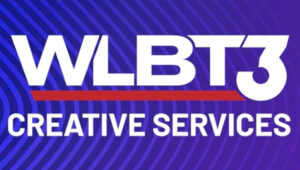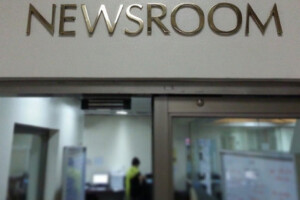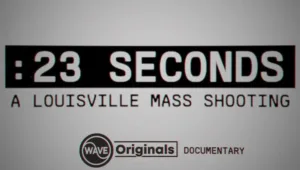The inaugural Smart Spectrum Summit demonstrated to the public safety community how adoption of the ATSC 3.0 next-gen TV transmission standard will also give them a reliable, robust wireless communications service that can sidestep current wireless network congestion to deliver potentially lifesaving information.
A new study says implementing the ATSC 3.0 next-gen standard could result in $12 billion to $20 billion in additional annual revenue to broadcasters.
What are the nation’s TV broadcasters going to do after they give up some of their spectrum to wireless carriers in the FCC’s upcoming incentive auction? Why, they might compete directly with those very same carriers, of course. At least, that’s how the market may shake out if the nation’s TV broadcasters adopt the new ATSC 3.0 transmission standard in the coming years.
The final day of SMPTE’s Annual Technology Conference and Exhibition offered a look at the important next steps in the transition of over-the-air broadcasting to IP via ATSC 3.0. The next-generation standard will allow broadcasters not only to deliver a range of new services but also to leave behind an antiquated transmission mechanism that is cumbersome and difficult to improve.
 Proponents of the ATSC 3.0 next-gen TV transmission standard say this week’s announcement that FEMA is testing the proposed AWARN television emergency alerting system component demonstrates federal recognition of the value of ATSC 3.0. (WRAL photo)
Proponents of the ATSC 3.0 next-gen TV transmission standard say this week’s announcement that FEMA is testing the proposed AWARN television emergency alerting system component demonstrates federal recognition of the value of ATSC 3.0. (WRAL photo)
FEMA Launches AWARN Testing
Pearl, APTS Eager To Push ATSC 3.0 At FCC
 The Pearl consortium of several large commercial TV station groups and the Association of Public Television Stations are expected to take the lead asking for FCC approval of the next-gen transmission standard. They want to “sync up” the transition to it with the forced migration to new channels that many stations may have to make if the FCC’s incentive auction of TV spectrum is successful next spring.
The Pearl consortium of several large commercial TV station groups and the Association of Public Television Stations are expected to take the lead asking for FCC approval of the next-gen transmission standard. They want to “sync up” the transition to it with the forced migration to new channels that many stations may have to make if the FCC’s incentive auction of TV spectrum is successful next spring.
3.0: The Big Story Americans Haven’t Heard

Kim, Luplow Extol ATSC 3.0 Progress
 Dr. Jong Kim, Zenith R&D president and LG Electronics SVP, and Zenith VP Wayne Luplow say ATSC 3.0 will revitalize TV broadcasting. Now that ATSC has moved the proposed standard another step closer to adoption, they explain why this latest decision is an important milestone and claim that, although the standard represents the technology of several system proponents, no compromises were made in adopting the best possible standard. Luplow (l) and Kim are shown above in the Zenith R&D lab in Lincolnshire, Ill.
Dr. Jong Kim, Zenith R&D president and LG Electronics SVP, and Zenith VP Wayne Luplow say ATSC 3.0 will revitalize TV broadcasting. Now that ATSC has moved the proposed standard another step closer to adoption, they explain why this latest decision is an important milestone and claim that, although the standard represents the technology of several system proponents, no compromises were made in adopting the best possible standard. Luplow (l) and Kim are shown above in the Zenith R&D lab in Lincolnshire, Ill.
ATSC 3.0 Physical Layer Out To Members For Vote
On NAB’s TV Agenda: Retrans, Auction, 3.0
 NAB Joint Board Chairman Dave Lougee doesn’t like to make predictions about how the association’s policy initiatives will turn out, but he promises it is working hard to insure that FCC doesn’t tip the scales in favor of MVPDs in retrans negotiations, that the incentive auctions benefit sellers without harming non-sellers and that TV broadcasters have the option of moving to a superior transmission standard.
NAB Joint Board Chairman Dave Lougee doesn’t like to make predictions about how the association’s policy initiatives will turn out, but he promises it is working hard to insure that FCC doesn’t tip the scales in favor of MVPDs in retrans negotiations, that the incentive auctions benefit sellers without harming non-sellers and that TV broadcasters have the option of moving to a superior transmission standard.
 The process for determining which of the competing audio formats will become ATSC 3.0, the next-generation standard for broadcast sound in the U.S., has revealed a sharper edge in recent weeks. Since both the MPEG-H Audio Alliance and Dolby Labs, which is backing its AC-4 codec, demonstrated their respective formats at an ATSC event in Atlanta in July, the science has been taking a back seat to increasingly aggressive marketing tactics.
The process for determining which of the competing audio formats will become ATSC 3.0, the next-generation standard for broadcast sound in the U.S., has revealed a sharper edge in recent weeks. Since both the MPEG-H Audio Alliance and Dolby Labs, which is backing its AC-4 codec, demonstrated their respective formats at an ATSC event in Atlanta in July, the science has been taking a back seat to increasingly aggressive marketing tactics.
The ATSC 3.0 proponent receives FCC approval to operate a full-power, single frequency network test platform in Washington and Baltimore on ch. 43. It will broadcast a range of next-gen services that include fixed, portable and mobile capabilities to provide real-time assessments of the new Internet protocol-based standard currently being reviewed by the Advanced Television Systems Committee.
In major milestone, a key subcommittee adopts a transmission system reflecting a compromise among the major system proponents, including Samsung, LG Electronics and Sinclair Broadcast Group-backed ONE Media. It’s expected to be issued as a candidate standard within the next several weeks. Audio becomes the new sticking point.
 This year’s annual tech gathering in Amsterdam has an ambitious agenda including tackling shifting business models and new viewer behavior; how broadcasters are beginning to adopt the Netflix on-demand, streaming model with their own online offerings; challenges in delivering new mobile broadcast platforms; the latest OTT developments as well as up-to-the-minute status reports on ATSC 3.0 and Ultra HD.
This year’s annual tech gathering in Amsterdam has an ambitious agenda including tackling shifting business models and new viewer behavior; how broadcasters are beginning to adopt the Netflix on-demand, streaming model with their own online offerings; challenges in delivering new mobile broadcast platforms; the latest OTT developments as well as up-to-the-minute status reports on ATSC 3.0 and Ultra HD.
GatesAir Poised For TV Repack, ATSC 3.0
 Rich Redmond is the chief product officer at transmission specialist GatesAIr and is a student of the technical and regulatory forces forever reshaping broadcasting. He talks about the challenges and opportunities — for GatesAir and the TV broadcasting — presented by the TV band repack that will follow next year’s spectrum incentive auction and by the coming of the next-generation TV transmission standard ATSC 3.0.
Rich Redmond is the chief product officer at transmission specialist GatesAIr and is a student of the technical and regulatory forces forever reshaping broadcasting. He talks about the challenges and opportunities — for GatesAir and the TV broadcasting — presented by the TV band repack that will follow next year’s spectrum incentive auction and by the coming of the next-generation TV transmission standard ATSC 3.0.
 LG tested three types of its next-gen signals in a mobile environment: Ultra HD, HD and SD, all simultaneously within one channel. The HD and SD signals performed about as well as the old ATSC DTV mobile standard, delivering “clean” signals in 80% and 90% of the locations, respectively. Ultra HD, which is not meant for mobile broadcasts, didn’t work nearly as well. Yesterday it demoed the technology for more than 60 engineers in Cleveland, including reception on a bus.
LG tested three types of its next-gen signals in a mobile environment: Ultra HD, HD and SD, all simultaneously within one channel. The HD and SD signals performed about as well as the old ATSC DTV mobile standard, delivering “clean” signals in 80% and 90% of the locations, respectively. Ultra HD, which is not meant for mobile broadcasts, didn’t work nearly as well. Yesterday it demoed the technology for more than 60 engineers in Cleveland, including reception on a bus.
 Using single frequency network technology to supplement a station’s main ATSC 3.0 signal looks to improve service, increase over-the-air audience and enable new revenue sources, including better reception by mobile devices and data delivery. But this would come at a price of nearly $2 million per station, according to a plan developed by engineering consultants Meintel, Sgrignoli & Wallace.
Using single frequency network technology to supplement a station’s main ATSC 3.0 signal looks to improve service, increase over-the-air audience and enable new revenue sources, including better reception by mobile devices and data delivery. But this would come at a price of nearly $2 million per station, according to a plan developed by engineering consultants Meintel, Sgrignoli & Wallace.
Can ATSC 3.0 Revive The Datacasting Dream?
 Proponents of the next-generation TV standard say its much more robust signal will let stations deliver data not just to fixed digital sets with indoor antennas, but also to the proliferating millions of smartphones and tablets, making it another revenue stream. However, some of the pioneer datacasters from 15 years ago are unpersuaded that time and better technology have improved the chances for datacasting success.
Proponents of the next-generation TV standard say its much more robust signal will let stations deliver data not just to fixed digital sets with indoor antennas, but also to the proliferating millions of smartphones and tablets, making it another revenue stream. However, some of the pioneer datacasters from 15 years ago are unpersuaded that time and better technology have improved the chances for datacasting success.
 NAB President Gordon Smith spells out the advantages of adopting the new next-generation TV transmission standard, but says his group must represent the wishes of “a majority our members.” And those members are divided. Talking to the New York State Broadcasters Association, Smith also addresses the spectrum auction and repack as well as efforts by cable and satellite to get retrans reform.
NAB President Gordon Smith spells out the advantages of adopting the new next-generation TV transmission standard, but says his group must represent the wishes of “a majority our members.” And those members are divided. Talking to the New York State Broadcasters Association, Smith also addresses the spectrum auction and repack as well as efforts by cable and satellite to get retrans reform.
The Pearl group of nine major station groups and Sinclair have agreed to work with the consumer electronics giant over the next 18 months to develop and test new features and services that will support broadcasters’ evolving business models for the next-generation broadcast TV standard.
How Do You Entertain A Hybrid?
 A new technology known as quantum dots brings within reach affordable, mass market production of 4K Ultra HD television sets that display purer colors and brighter pixels. But QD technology isn’t just for consumers. Dolby Labs has introduced a 32-inch Dolby Vision reference monitor using QD and it looks like the technology could be well-suited to the needs of broadcasters for reference and production monitors in the future. Shown above is a Samsung 88-inch JS-9500 QD set on display at the 2015 CES.
A new technology known as quantum dots brings within reach affordable, mass market production of 4K Ultra HD television sets that display purer colors and brighter pixels. But QD technology isn’t just for consumers. Dolby Labs has introduced a 32-inch Dolby Vision reference monitor using QD and it looks like the technology could be well-suited to the needs of broadcasters for reference and production monitors in the future. Shown above is a Samsung 88-inch JS-9500 QD set on display at the 2015 CES.
FCC Needs A Broadcast Attitude Adjustment

Fritz: Time To Press FCC To Adopt ATSC 3.0
 Jerald Fritz of ONE Media says if broadcasters can submit a petition to the commission this summer, the FCC may be able to conduct a rulemaking and give its blessing late this year or early next. That means TV stations could be on the air with the standard sometime in 2017, he adds.
Jerald Fritz of ONE Media says if broadcasters can submit a petition to the commission this summer, the FCC may be able to conduct a rulemaking and give its blessing late this year or early next. That means TV stations could be on the air with the standard sometime in 2017, he adds.
Next-Gen TV Benefits Well Worth The Cost

Is ATSC 3.0 Diginet Savior Or Competitor?
 There are two sides to the coin of next-gen TV standard ATSC 3.0 where diginets are concerned. If scores of stations opt to sell their spectrum in the incentive auction and abandon their diginet affiliations, stations that choose to keep their spectrum will have the additional capacity to accommodate at least some of them. However, the new standard will also give stations the ability to transmit IP data services on their excess spectrum. If those prove more lucrative, the diginets may be out of luck. This is the final part of a four-part special report on multicasting. Read the other stories here.
There are two sides to the coin of next-gen TV standard ATSC 3.0 where diginets are concerned. If scores of stations opt to sell their spectrum in the incentive auction and abandon their diginet affiliations, stations that choose to keep their spectrum will have the additional capacity to accommodate at least some of them. However, the new standard will also give stations the ability to transmit IP data services on their excess spectrum. If those prove more lucrative, the diginets may be out of luck. This is the final part of a four-part special report on multicasting. Read the other stories here.
Start Selling Washington On ATSC 3.0 Now

 NAB President Gordon Smith on Thursday said it was in the best interests of the FCC to be a part of the industry’s move to adopt the next-generation broadcast TV transmission standard that could turn the TV station business into a mobile business. At the Thursday ATSC gathering are (l-r) Smith, NCTA CEO Michael Powell and Consumer Electronics Association CEO Gary Shipiro. (ATSC photo)
NAB President Gordon Smith on Thursday said it was in the best interests of the FCC to be a part of the industry’s move to adopt the next-generation broadcast TV transmission standard that could turn the TV station business into a mobile business. At the Thursday ATSC gathering are (l-r) Smith, NCTA CEO Michael Powell and Consumer Electronics Association CEO Gary Shipiro. (ATSC photo)
 “At every layer of the system, there are parameters broadcasters can set to fine-tune the technology to their business, and I think they are a little surprised by that,” ATSC’s Mark Richer said on the first day of the group’s Washington conference on the next-generation TV transmission standard.
“At every layer of the system, there are parameters broadcasters can set to fine-tune the technology to their business, and I think they are a little surprised by that,” ATSC’s Mark Richer said on the first day of the group’s Washington conference on the next-generation TV transmission standard.
The ATSC 3.0 Technology Group 3 has approved technology proposed by One Media and China’s National Engineering Research Center as a critical part of ATSC 3.0’s modulation and error coding component known as the physical layer. “At the end of the day, what we have is a wireless, data-agnostic IP pipeline,” says Sinclair Broadcast Group’s Mark Aitken. “That means the bits that flow across the Internet can flow across our spectrum.”































